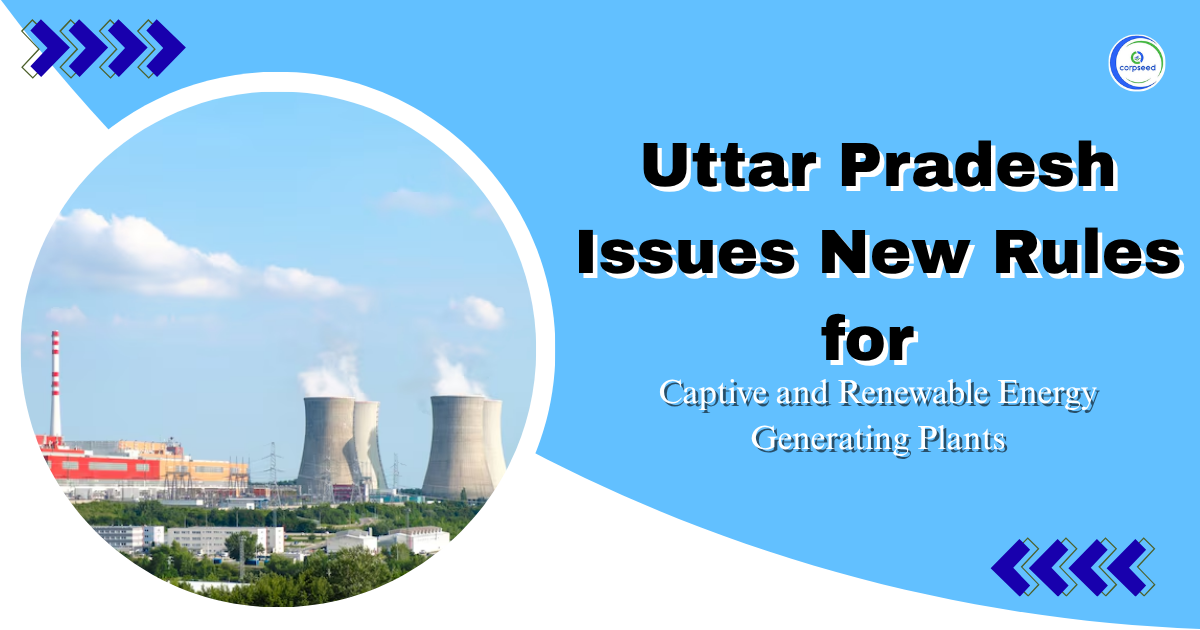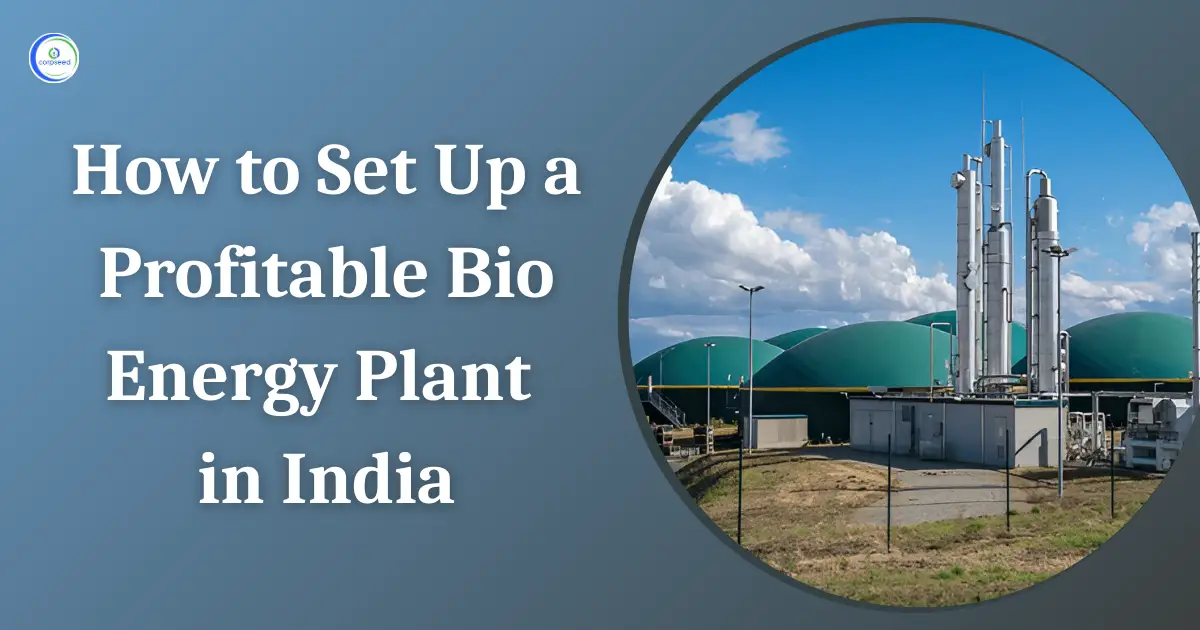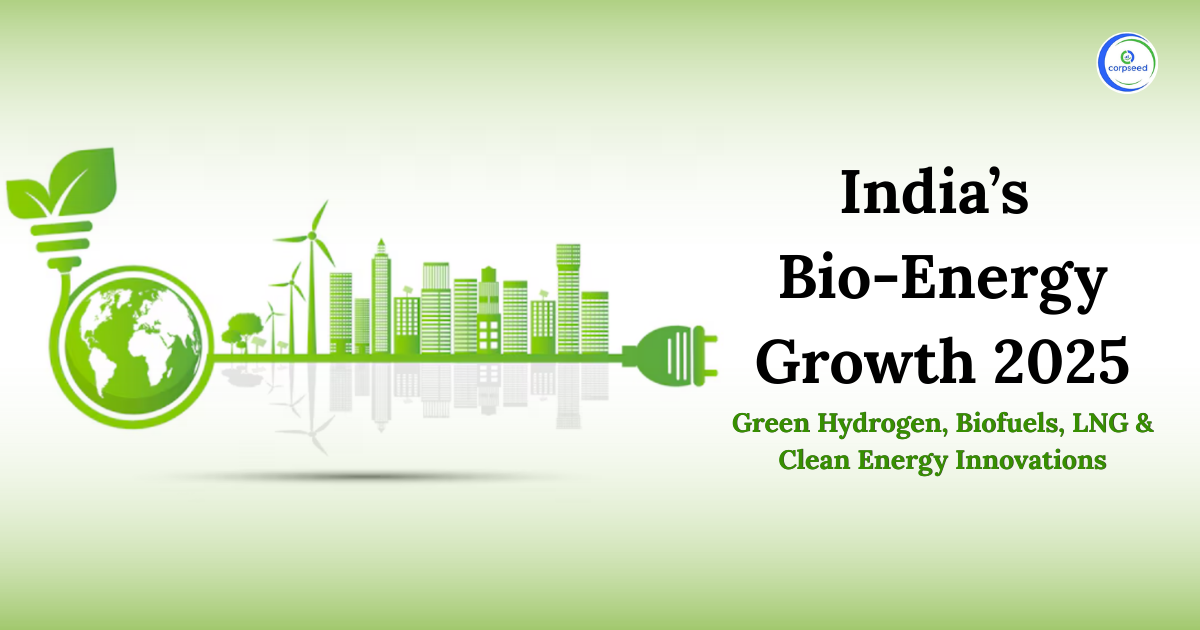The UPERC, i.e, Uttar Pradesh Electricity Regulatory Commission (UPERC), has issued the Captive and Renewable Energy Generating Plants (CRE) Regulations, 2024. These rules give a clear guide for making electricity from captive and renewable energy sources in Uttar Pradesh.
The main goal is to promote clean energy, keep the power grid stable, make tariffs simple, and help India reach its renewable energy targets. The CRE Regulations, 2024, remain effective from the date of notification till 31 March 2029, with tariff-related provisions applicable from 1 April 2024 to 31 March 2029.
Table of Contents
- What are the Uttar Pradesh Electricity Regulatory Commission Rules, 2024?
- Key Provisions of CRE Regulations, 2024
- Applicability and Scope
- Clean Development Mechanism (CDM) for Generating Plants
- Compliance Requirements for Generating Plants
- Additional Obligations for Captive Generating Plants
- Tariff for Supply of Electricity to Distribution Licensee
- Approval of Power Purchase Agreements (PPAs)
- Power Purchase for Generating Plants
- Open Access and Exemptions
- Banking of Energy
- Maintenance of Transmission Lines and Equipment
- Repeal and Savings
- Procedure for Declaration of COD
- Importance of the Regulations
- Conclusion
--------------Blog Contact Form-------------
What are the Uttar Pradesh Electricity Regulatory Commission Rules, 2024?
The UPERC CRE Regulations, 2024 have been made under Section 181 read with Sections 9, 61, 86(1)(a), 86(1)(b), and 86(1)(e) of the Electricity Act, 2003. These regulations apply to all Captive Generating Plants (CGPs), both renewable and non-renewable, with an installed capacity of 1 MW or more, as well as renewable energy generating plants, including cogeneration plants. The main aim of these rules is to bring consistency in electricity generation, tariff setting, and grid operations in the whole state.
Key Provisions of CRE Regulations, 2024
The key provisions of the CRE Regulations, 2024 are:
1. Applicability and Scope
These regulations apply to every captive generating plant that has an installed capacity of 1 MW or more, whether it operates on renewable or non-renewable energy sources. They also include renewable energy projects and cogeneration systems designed for efficient energy use. The framework covers the entire state and applies to all entities engaged in producing, selling, or utilizing electricity under captive or renewable energy arrangements.
2. Clean Development Mechanism (CDM) for Generating Plants
Generating plants commissioned on or after 1 April 2009 that adopt the Clean Development Mechanism (CDM) can retain 100% of carbon credit proceeds during the first year of operation. The share of the power procurer starts from 10% in the second year, increasing by 10% each year until it reaches 50%, after which the proceeds are shared equally. If the CDM project is discontinued or the mechanism changes, the Commission will decide the new sharing pattern.
3. Compliance Requirements for Generating Plants
Every generating plant must follow strict compliance norms:
- Generating units must follow the technical standards prescribed by the Central Electricity Authority (CEA) for design, construction, operation, and connectivity.
- Plants are required to meet safety norms in line with CEA regulations for both operation and maintenance to prevent accidents and ensure workforce safety.
- Each project must operate within the regulatory framework of the Uttar Pradesh Electricity Regulatory Commission (UPERC) Connectivity Regulations, 2010, along with other applicable codes and orders.
- Proper metering systems must be installed and maintained as per the guidelines issued by the CEA and the State Transmission Utility (STU) to ensure accurate measurement of energy generation and supply.
- Coordination with the State Load Despatch Centre (SLDC) is mandatory for scheduling, dispatching, and monitoring of electricity, along with payment of applicable SLDC fees.
- All plants must obtain environmental clearances, including emission and pollution control approvals, and submit periodic compliance reports to the concerned authorities.
- Any deviation in power supply must be managed in accordance with the CERC.
- Deviation Settlement Mechanism (DSM) Regulations, 2024, to maintain grid stability and accountability.
4. Additional Obligations for Captive Generating Plants
Captive generating plants must:
- Follow Section 9 and Rule 3 of the Electricity Rules, 2005, to make sure it meets the right ownership and usage rules.
- Compliance with the UPERC Verification Regulations, 2022, is compulsory for verification of captive status and related operational criteria.
- Captive operators are required to conduct annual energy audits in accordance with the Energy Conservation Act of 2001, to monitor and improve energy efficiency.
- Plants must also comply with the directions issued by the State Nodal Agency for achieving Renewable Purchase Obligations (RPO), promoting the use of clean and sustainable energy within the captive framework.
5. Tariff for Supply of Electricity to Distribution Licensee
- Existing Plants: Tariffs for Bagasse, Biomass (Rice Husk), Municipal Solid Waste, and Small Hydro plants are fixed in Schedule-I and are valid from 1 April 2024 to 31 March 2029.
- New Plants: Follow tariff norms under UPERC Modalities of Tariff Determination Regulations, 2023.
- Rooftop Solar PV: Governed by UPERC Rooftop Solar PV Regulations, 2019.
- Multiple Units: Weighted average tariff applies for units commissioned in different years.
- Capacity Charges: PLF (Plant Load Factor) target is 80% for Biomass and 50% for Bagasse. Below-target PLF gets pro-rata recovery, no capacity charge for zero PLF.
- New RE Technologies: Pilot projects up to 5 MW get tariffs based on either APPC or PPA rate, whichever is lower.
6. Approval of Power Purchase Agreements (PPAs)
All Power Purchase Agreements (PPAs) signed by distribution licensees with generating plants must be approved by UPERC. The approval process follows the UPERC Conduct of Business Regulations, 2019. The licensee must apply for approval within one month of signing the PPA and submit yearly energy data by 30 June for the previous financial year.
7. Power Purchase for Generating Plants
Generating plants may buy electricity from the local distribution licensee or through Open Access to meet their needs. Power purchased from distribution licensees falls under the HV-2 tariff category. Demand charges:
- 50% for usage up to 15 days.
- 100% for more than 15 days.
- Nil if no power is drawn.
8. Open Access and Exemptions
Captive Generating Plants (CGPs) using state or interstate networks must pay transmission, wheeling, and other charges. However:
- CGPs are exempt from cross-subsidy surcharges when supplying power for captive use.
- If power is supplied to non-captive consumers, a cross-subsidy surcharge applies.
- Solar projects above 5 MW under the Uttar Pradesh Solar Energy Policy 2022 enjoy: 100% exemption on wheeling and transmission charges for sales to distribution licensees. 50% exemption for captive or third-party sales.
9. Banking of Energy
Banking allows CGPs and cogeneration plants to store excess electricity for later use.
- Bagasse-based plants: Can bank up to 100% energy per quarter and carry forward for two quarters.
- RE CGPs (excluding Bagasse): Can bank the higher of 25% of monthly injected energy or 30% of monthly consumption.
- Non-RE plants: Paid ₹1/unit or PPA rate, whichever is lower.
- MSW plants: Banking not allowed.
- Banking charges: 8% for solar, wind, and hybrid RE. 12% for other CGPs and cogeneration plants.
Energy withdrawal follows the FIFO principle and must be scheduled day-ahead.
10. Maintenance of Transmission Lines and Equipment
- Generating plants (except MSW) maintain their dedicated transmission lines and terminal equipment.
- Distribution Licensee or STU may perform maintenance for a mutually agreed fee.
- For MSW plants, the entire maintenance cost is borne by the Distribution Licensee or STU, recoverable in their tariff.
11. Repeal and Savings
The UPERC CRE Regulations, 2019, stand repealed once the 2024 regulations come into force. However, actions taken under the old regulations remain valid unless they directly conflict with the new rules.
Procedure for Declaration of COD
The Commercial Operation Date (COD) marks the official start of energy supply from a renewable plant.
1. For RE Plants Selling to Distribution Licensees
- COD or part-COD is declared as per the approved PPA.
- Power injected during the trial run is treated as a deemed purchase, and the licensee pays 50% of the PPA tariff for it.
2. For Solar PV Plants Selling to Other Entities
- The Solar Power Developer (SPD) must register with UPSLDC and notify of a 7-day trial run schedule.
- Minimum 10% capacity must be tested during the trial.
- Up to four trial attempts are allowed.
- A successful trial run must maintain peak generation for 15 minutes on three days within two weeks.
- COD may be declared after verification by SLDC within one year.
- If full capacity is not achieved in one year, capacity must be derated.
- Infirm power during trials is paid at 50% of the weighted average tariff of approved solar projects.
Importance of the Regulations
The UPERC CRE Regulations, 2024, ensure transparency, fairness, and sustainability in the state's power sector.
- Provide certainty: A fixed control period (from 2024 to 2029) gives generating companies, captive users, distribution licensees, and investors clarity about rules and tariffs.
- Promote renewable energy and captive generation: By covering captive and RE plants, giving banking/open access provisions, and tariff clarity, the framework encourages new investment in clean power.
- Clarify cost responsibilities and infrastructure roles: By specifying who builds and maintains transmission/equipment, how costs are recovered, and who pays what (wheeling/ banking charges), the regulation reduces confusion and conflicts.
- Support the state's renewable energy targets and policy goals: With open access exemptions (especially for solar above 5 MW), banking flexibility, captive generation encouragement, etc., the state is positioned to scale clean energy.
- Simplify for stakeholders: Clear definitions, scopes, step-by-step processes (especially COD declaration), and specific obligations help generate plants and licensees understand and comply.
Conclusion
The Uttar Pradesh Electricity Regulatory Commission (Captive and Renewable Energy Generating Plants) Regulations, 2024, is an important move taken for the state, which will become cleaner and greener in the future. These rules help bring more investment into renewable energy, make electricity prices fair, keep the power system stable, and protect the environment. By setting clear and simple regulations for power usage, sharing, and pricing, the regulations focus on building a trustworthy and sustainable energy system in UP. With these changes, the state takes a stringent move toward attaining energy security and sustainability while contributing to India's broader vision of a clean and green energy future.
This portion of the site is for informational purposes only. The content is not legal advice. The statements and opinions are the expression of author, not corpseed, and have not been evaluated by corpseed for accuracy, completeness, or changes in the law.
BOOK A FREE CONSULTATION
Get help from an experienced legal adviser. Schedule your consultation at a time that works for you and it's absolutely FREE.



.webp)





